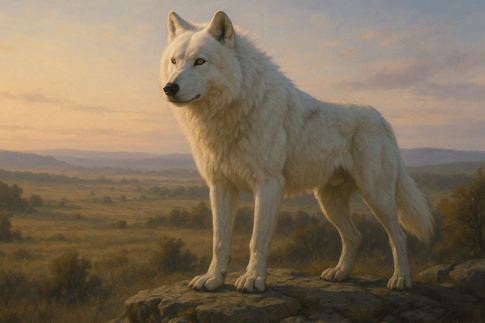Dire Wolves Walk Again After 12,500 Years

North America's most formidable Ice Age predator has returned. After vanishing from Earth over 12,500 years ago, dire wolves once again walk on American soil through the efforts of Colossal Biosciences, a Texas-based biotechnology firm specializing in genetic restoration technologies.
The breakthrough has sent ripples through scientific communities worldwide. Dr. Beth Shapiro, paleogeneticist with the University of California system, documented the achievement's significance: "This represents a fundamental shift in our relationship with extinction. What we once considered permanent biological loss may now be temporary."
Dire wolves (Canis dirus) were significantly larger than modern gray wolves, with fossil records suggesting adults weighed between 150-175 pounds, with specialized adaptations for hunting large megafauna that populated Pleistocene North America. Their broad skulls, powerful jaws, and robust bone structure made them specialized hunters capable of bringing down large prey.
The restoration program began with paleogenomic analysis of specimens recovered from the La Brea Tar Pits in California and other fossil repositories. Unlike previous genetic revival attempts, Colossal employed advanced computational modeling combined with CRISPR gene-editing technology to reconstruct viable embryos.
The three living dire wolf specimens—named Romulus, Remus, and Khaleesi—now reside at a secured 2,000-acre facility. Early observations confirm they exhibit the physical characteristics identified in fossil records, including the distinctive white coat never depicted in fictional portrayals.
Security protocols surrounding the facility reflect both scientific and ethical considerations. Access remains restricted to essential personnel, though limited scientific observation sessions have been arranged for qualified researchers.
Dr. Laura Richards, veterinary specialist assigned to the program, notes the wolves display behavioral patterns consistent with modern canids while exhibiting distinct differences: "Their vocalizations have unique acoustic signatures compared to contemporary wolves. Additionally, their social bonding appears highly developed, even at this early stage."
For Ben Lamm, Colossal's founder and chief executive, the achievement represents both scientific victory and conservation milestone. "The technologies developed for dire wolf restoration have immediate applications for endangered species today," Lamm stated at a recent press briefing. "We've already begun adapting these techniques to strengthen genetic diversity in critically endangered red wolves."
Fossil evidence suggests dire wolves evolved in North America approximately 250,000 years ago, diverging from gray wolf ancestors. They thrived until approximately 13,000 years ago, when climate change and human hunters likely contributed to their extinction alongside other megafauna.
The evolutionary path of dire wolves includes significant divergence from modern wolf species. Recent genomic studies revealed dire wolves split from the ancestral line of gray wolves much earlier than previously thought—approximately 5.7 million years ago. This makes them more distantly related to modern wolves than previously assumed.
Colossal Biosciences has published complete genetic data for scientific review, maintaining transparency unusual in private biotechnology ventures. This approach reflects their stated commitment to advancing conservation science rather than commercializing extinct species.
The dire wolf program represents merely the beginning of planned de-extinction work. The company maintains ongoing research into several extinct species with potential ecological significance and conservation applications.
For now, the world's only living dire wolves remain under careful observation in controlled settings. No plans exist for wildlife reintroduction, though genetic material has been preserved for potential future conservation applications. The primary focus remains studying these living specimens to bridge paleontological understanding with contemporary wildlife biology.
The revival also creates unexpected intersections between science and popular culture. While dire wolves gained contemporary recognition through fictional portrayals, the scientific reality proves equally compelling—apex predators whose genetic legacy now continues after a 12,500-year interruption.



